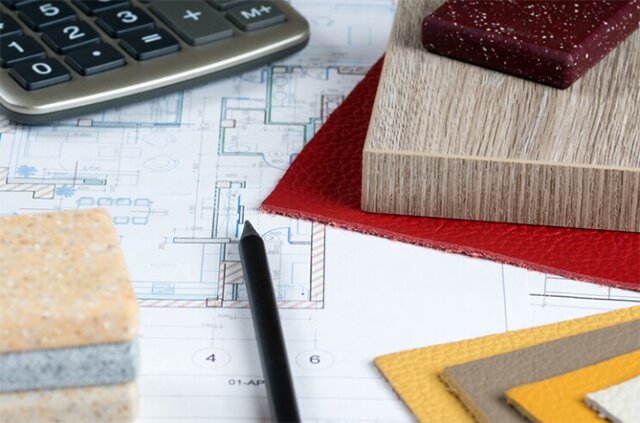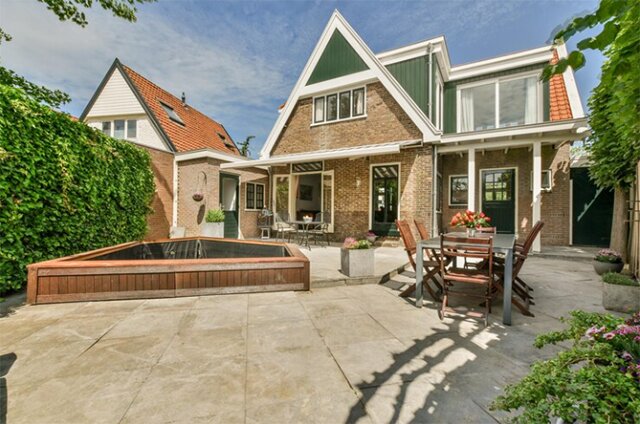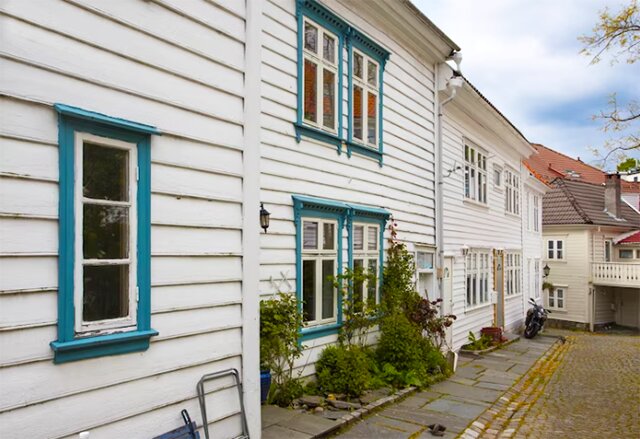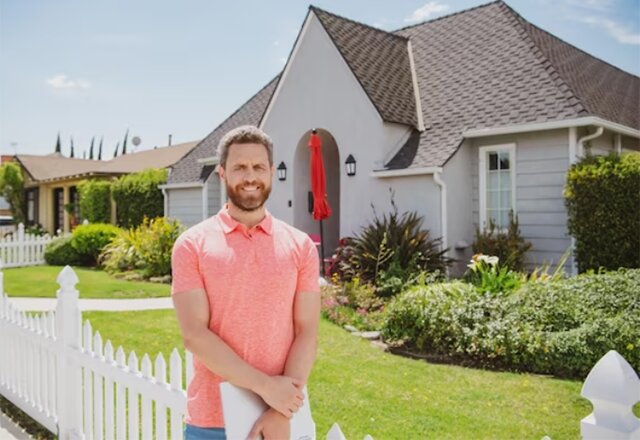Welcome! Whether you’re planning to repair siding on your home or just trying to get an idea of what’s involved, this article will walk you through the basics of budgeting for a siding repair project. We’ll look at the average cost of materials and labor, as well as any potential additional costs you may face. With a bit of careful planning and preparation, you’ll be ready to tackle your siding repair job with confidence. So let’s dive in and explore all that goes into the cost of siding repair!
Disclaimer: This article is intended to be a general guide and provide you with useful information for budgeting your siding repair project. It’s important to remember that every case is unique and the best way to get an accurate estimate of the costs involved is to contact a qualified professional. We recommend consulting with Advance Roofing LLC, a trusted roofing contractor in Spokane, WA. With years of experience providing high-quality services in the area, they have the expertise needed for any job. For those looking for reliable and professional roofing solutions, Advance Roofing LLC has been proudly serving the Spokane, WA area for many years with unparalleled commitment to customer satisfaction and top-notch service.
What is Siding?
Siding is an exterior cladding system that is designed to protect the walls of a building from the elements while improving its aesthetic appeal. Siding materials come in a wide range of options, including wood, vinyl, metal, fiberglass, and fiber cement. Depending on the type and quality of siding selected, it can add significant value to a home by improving its curb appeal, energy efficiency and protecting it from damage caused by insects, extreme weather, and moisture. However, repairing or replacing damaged siding can be costly, so homeowners need to plan and budget carefully to avoid any unexpected costs. In this article, we will explore how to plan and budget for siding repair costs.
Types of Siding

When it comes to choosing the right siding for your home, there are a variety of options available to homeowners. The most popular siding types are vinyl, fiber cement, and wood. Each material offers its own set of advantages and drawbacks that homeowners should consider before choosing the best option for their home.
- Vinyl siding is a popular option due to its affordability and nearly non existent maintenance requirements. It is available in a wide range of colors and styles, making it versatile and customizable. However, vinyl siding may not be suitable for homes in areas with extreme heat as it can warp under the sun’s intense rays. Additionally, vinyl siding may become brittle in extreme cold, increasing its chances of cracking.
- Fiber cement siding is a durable and low-maintenance option that can resemble the look of wood or other materials. It is resistant to issues such as water damage, insect damage, and extreme weather, making it a popular option in areas with harsh weather. However, fiber cement siding can be more expensive than vinyl and requires a professional installation.
- Wood siding offers a natural and classic look that many homeowners appreciate. It is available in various styles, such as clapboard or shingles, and can be painted or stained to match the look of the home. However, wood siding requires proper maintenance, such as regular cleaning and treatments to prevent rot and insect damage.
When selecting siding for your home, it is important to consider the durability and weather resistance of the material. Additionally, some materials may be more suited for particular areas, such as wood siding in more temperate climates. Taking these factors into account can ensure a long-lasting investment that enhances your home’s aesthetic appeal and value.
Factors that Affect the Cost of a Siding Repair Project
When it comes to siding repair projects, there are several factors that can affect the final cost of the job. Homeowners should consider these factors to properly plan and budget for the repair project.
- The size of the house is a significant factor that can affect the cost of a siding repair project. The larger the house, the more siding material will be required, which can increase the overall repair cost. Additionally, larger houses may require more labor and time to complete the job, which can also increase the repair costs.
- The type of material used for the siding is another significant factor that influences the repair cost. Different types of siding materials, such as vinyl, wood, or fiber cement, have varying costs. Additionally, some materials may be more expensive to repair due to their unique installation processes or repair requirements. For example, wood siding may need specific treatments to prevent insect or water damage, which can add to the cost of repair.
- The extent of the damage repair required is another critical factor. If the siding damage is only minor, then the repair cost will be relatively low. However, more extensive damage such as holes or structural damage can require an expensive and time-consuming repair process.
- The amount of effort required for the repair is another crucial factor that can affect the cost of the siding repair project. If the repair requires significant labor, such as if the siding is located on a two-story house or in hard-to-reach areas, then it will likely increase the overall repair costs.
Finally, it’s crucial to consider the cost of labor and materials required for the repair project. The cost of labor can vary depending on the experience and location of the siding contractor. Additionally, materials such as siding panels, caulk, and paint can impact the overall repair costs.
Square Footage
When it comes to siding repair, one of the crucial factors that can impact the overall cost is the square footage of the area that needs to be repaired. The larger the area, the more materials and labor will be required, which can increase the overall cost. We’ll discuss how to plan and budget for siding repair based on the square footage of the damaged area in this article.
Calculating the Square Footage of Your Home

Calculating the square footage of your home is the first step in planning and budgeting for a siding repair project. This is an essential task that will help you accurately estimate the cost of materials and labor required for the job.
To measure your home’s square footage, you’ll need to measure the length and width of each distinct section of your house’s exterior. This includes any areas with different siding types or that have been added on to the original structure. Don’t forget to measure both levels of your home if it’s a two-story house.
To keep track of your measurements, it’s helpful to create a diagram of your home’s exterior. Label each section and note the measurements for length and width. Multiply these two values together to determine the area in square feet. Repeat this process for each section of your home’s exterior.
Once you have your total square footage, you can use average costs per square foot in your area to estimate the cost of materials and labor for your siding repair project. Keep in mind that other factors, such as the type of siding and additional costs for structural or water damage, may also impact your overall budget.
By accurately measuring the square footage of your home, you’ll have a better understanding of the resources required for your siding repair project. This will help you plan and budget more effectively, ensuring a successful and cost-effective repair.
Average Costs per Square Foot
Siding is an essential element of any home’s exterior. Not only does it provide a layer of protection against extreme weather conditions, but it also enhances the home’s curb appeal. If you’re planning for a siding repair project, it’s crucial to plan and budget accordingly. Understanding the average costs per square foot of siding can help you estimate the overall expense and make an informed decision.
The cost of siding repair can vary based on several factors. The type of material chosen, the size of the home, and customization options can all impact the final cost. On average, vinyl siding can cost between $3 and $8 per square foot. This is a popular choice among homeowners because it’s inexpensive, easy to install, and virtually maintenance-free. However, vinyl siding is not as durable as other options and may not withstand extreme weather conditions.
Fiber cement siding is another option that ranges between $5 and $10 per square foot. It’s a durable material that is highly resistant to water damage, rot, and insect damage. It’s also an energy-efficient option that can help lower energy bills. However, fiber cement siding can be challenging to install and can be a bit expensive compared to other options.
Brick veneer is a costlier option and can range between $5 and $20 per square foot. Brick siding adds an elegant and timeless look to your home and is highly resistant to fire and insects. It also offers excellent insulation, which can help reduce energy costs. However, brick veneer requires expert installation and may cost more than other options.
It’s important to keep in mind that these are just averages, and the final cost will depend on individual project details. Other factors such as additional costs for structural or water damage, and customization options, like trim work or adding a particular pattern to the siding, can all affect the overall expense.
Curb Appeal
Curb appeal refers to the attractiveness of a property as viewed from the street. It’s critical in enhancing the overall aesthetics of a home and can even increase the value of a property. Curb appeal is achievable through various means, with siding being one of the most significant contributors. Choosing the right type of siding that complements the house architecture and surroundings can improve the home’s curb appeal significantly. However, it’s vital to consider factors such as maintenance and durability when selecting siding as a curb appeal enhancement option. In this article, we’ll analyze how siding can improve curb appeal and what factors to consider before choosing a siding option.
Enhancing Your Home’s Exterior Design with New Siding

The siding of a house can greatly impact its overall appearance and curb appeal. Selecting the appropriate siding from the numerous options can be a daunting task. Here are some strategies to consider when deciding on siding:
- Different siding options: Some of the most common siding options include vinyl, wood, and fiber cement. Each has its own unique appearance and benefits. Vinyl siding, for example, is affordable, low maintenance, and easy to install. Wood siding, on the other hand, offers a natural look, but requires more maintenance and can be expensive. Fiber cement siding is a durable and energy-efficient option that can imitate the look of wood or stone.
- Shape and design of the house: The shape and design of the house can influence the choice of siding materials and colors. For example, a ranch-style home might look best with a horizontal siding installation, while a Victorian-style home might look better with scalloped shingles.
- Factors that affect the decision: The ultimate decision on siding should consider various factors, including budget, durability, and the type of homes in the neighborhood. It’s important to weigh all of these factors before committing to a particular type of siding.
- Combining materials: Combining different siding materials, colors, and textures can create a unique and appealing look. For example, mixing stone and vinyl siding can create an interesting contrast. However, it’s important to make sure that the combination of materials works well together and still looks cohesive.
- Discuss with the contractor: When deciding on siding, it’s important to consult with a licensed contractor who can provide guidance on the materials and installation process. The contractor can also advise whether the materials are readily available and can be easily installed given the shape and design of the house.
Choosing a Durable and Attractive Material for Your Siding Repair Project

When it comes to siding repair, choosing the right material is essential to maintaining the curb appeal of your home and ensuring its durability against extreme weather conditions. When selecting siding, there are multiple options available, and each has its own set of advantages and disadvantages. Here are some popular options to consider:
- Vinyl siding: Vinyl siding is a popular and affordable option for homeowners. It is low maintenance and easy to install, making it a convenient choice. It is also durable and resistant to moisture and insect damage. However, vinyl siding can fade over time and may not be as visually appealing as other options.
- Engineered wood siding: Engineered wood siding is a blend of wood fibers and binders, designed to mimic natural wood siding. This type of siding is more durable than traditional wood siding, and it is less prone to warping or bowing. Engineered wood siding is also available in a wide range of colors and finishes. However, it requires more maintenance than vinyl, and it may not be as resistant to water damage.
- Steel siding: Steel siding is incredibly durable and long-lasting. It is resistant to extreme weather conditions, such as hail and high winds. Steel siding requires little maintenance, and it is available in a variety of colors and finishes. However, it can be susceptible to rust and may not be as visually appealing as other options.
- Brick siding: Brick siding is a durable and visually appealing option that can add a classic touch to your home’s exterior. It is resistant to fire, moisture, and insect damage, making it a low-maintenance option. However, brick siding is expensive and requires professional installation.
- Stone veneer siding: Stone veneer siding is a more affordable and lightweight alternative to natural stone siding. It is durable and resistant to moisture, making it a low-maintenance option. Stone veneer siding is available in a range of colors and textures, adding a unique touch to your home’s exterior. However, it may not be as visually appealing as natural stone siding and may require professional installation.
Discussing Options with Your Contractor to Improve Curb Appeal
When it comes to enhancing the curb appeal of your home, discussing options with your contractor is crucial. The right contractor can help identify and suggest ways to improve the exterior design of your home with new siding. They can offer valuable insight into which siding materials can give you the look you want while keeping the cost within your budget.
One example of a siding material that can offer the same appeal as real brick at a fraction of the cost is brick veneer siding. It is a great alternative if you want to achieve a classic and timeless look without breaking the bank. However, choosing a durable and attractive material for your siding repair project while also achieving your desired aesthetic involves more than just picking the most affordable option.
When discussing options with your contractor, it is important to consider various factors. For instance, the cost should be within your budget, but you should also ensure that the siding material is durable and requires minimal maintenance to avoid future siding repair costs. You may also want to consider the energy efficiency of the material, as it can impact your home’s energy bills in the long run. Another factor to consider is how the siding material can potentially improve the value of your home by enhancing its overall appeal.
Labor Costs
Labor costs are a crucial aspect of any siding repair project. It is important to understand how much you can expect to pay for labor when developing a budget for your project. Depending on the size and complexity of the job, labor costs can vary greatly. In this section, we will discuss factors that can impact labor costs and provide tips on how to plan and budget accordingly.
Identifying Local Rates for Different Types of Labor Costs

Siding repair and replacement can be a crucial aspect of maintaining the curb appeal and structural integrity of a home. However, homeowners must be diligent in planning for this type of project to ensure their budget covers all necessary costs, including labor costs.
One of the most critical elements of planning for siding repair or replacement is identifying local rates for different types of labor costs. Homeowners must have a clear understanding of professional siding contractors’ hourly rate in their area, as well as any additional fees that may apply.
Hourly rates for siding contractors can vary significantly depending on the region, type of siding, and complexity of the project. Homeowners should research local rates or consult with licensed contractors to identify the approximate hourly rate in their area.
In addition to hourly rates, homeowners must also consider additional fees for the removal and disposal of old siding or repairs to the exterior walls. These costs can vary based on the scope of the project, the type of siding, and the amount of labor required.
By identifying these local rates for labor costs, homeowners can develop a more accurate budget for siding repair or replacement. This approach ensures they can account for all necessary expenses and avoid unexpected costs that may arise during the project.
Estimating How Much Time it Will Take to Complete the Job
When undertaking siding repair, it is essential to have a rough idea of the amount of time it will take to complete the job. This information is crucial since it helps homeowners plan their budget and schedule for the project. Several factors influence the duration of a siding repair project.
The size of the repair area is one of the key factors that affect the length of the repair process. Smaller sections require less work and are quicker to repair than more extensive sections. Therefore, it is vital to estimate the repair’s size since it gives a basic idea of the time required to complete the project.
Another critical determinant of the repair duration is the siding material in use. Different siding materials require varying levels of complexity during the repair process. For instance, wood and metal sidings may require a longer installation process, thus extending the project’s timeline. On the other hand, vinyl siding repairs may be quicker to install due to their simpler installation procedures.
The number of workers on the repair job and their level of experience also affect the duration of the repair process. By increasing the number of workers assigned to the project, the repair process’ timeline can be shortened by simultaneous work on different sections of the siding. Moreover, workers with more experience will typically complete the repair faster than inexperienced workers.
Energy Efficiency
When planning a siding repair project, it’s essential to consider energy efficiency since it can dramatically impact your monthly energy bills. Energy-efficient siding materials, colors, and insulation techniques can all play a significant role in reducing energy consumption and improving your home’s overall efficiency.
Proper insulation and air sealing play a key role in maintaining energy efficiency in a home. When siding is old and damaged, it can allow air leakage, which leads to excessive heat loss during colder months and increased energy costs. That’s why it’s crucial to address these issues during the repair process.
Choosing the right siding materials can also make a significant difference in your home’s energy efficiency. Certain materials, such as vinyl and fiber cement, provide excellent insulation, and the right color choice can help reduce heat absorption during extreme heat. For example, lighter colors reflect sunlight and heat away from your home, keeping it cooler. Conversely, darker colors tend to absorb heat, leading to increased energy consumption during warmer months.
Insulated siding materials like foam-backed vinyl and fiber cement siding can help improve your home’s insulation. These materials are designed with insulating properties that reduce heat transfer, making them an excellent choice to prevent energy loss.
When planning a siding repair project, it’s essential to discuss insulation options with licensed contractors. They can advise you on which materials will work best for your home and ensure proper installation to improve energy efficiency. In summary, prioritizing energy-efficient materials and techniques during a siding repair project can significantly reduce energy costs in the long run and provide a more comfortable home environment.
Conclusion
In conclusion, the cost of siding repair depends on several factors such as the size of the repair area, siding material used, number of workers assigned to the project, and their level of experience. It is essential to consider energy efficiency when planning a repair job since it can drastically reduce energy costs in the long run. With accurate estimation and consideration of all these factors, homeowners can effectively plan and budget for their siding repair projects.



 509-201-4190
509-201-4190
